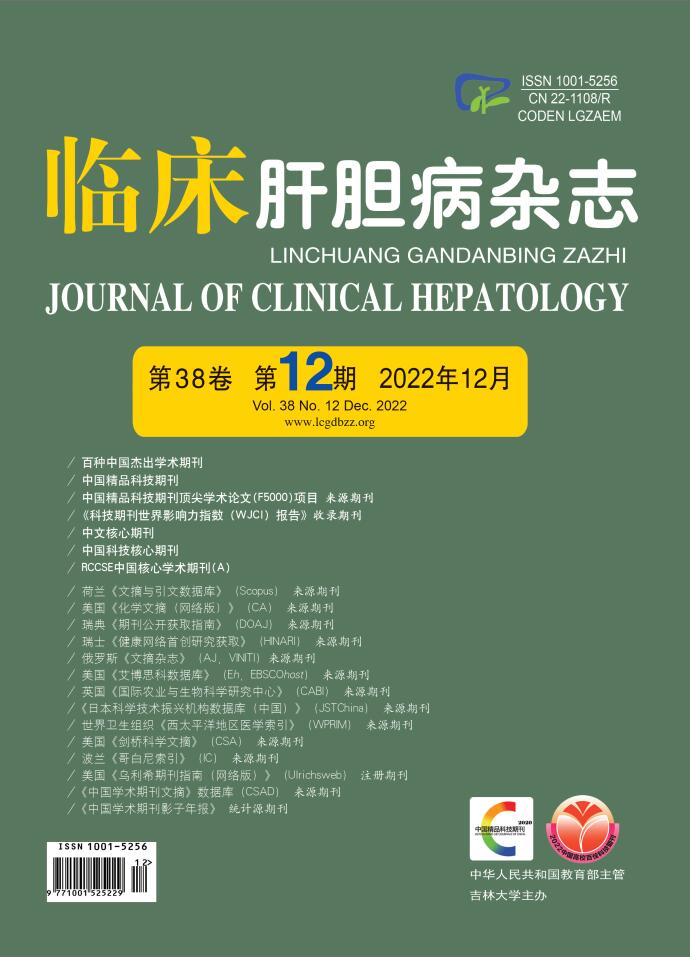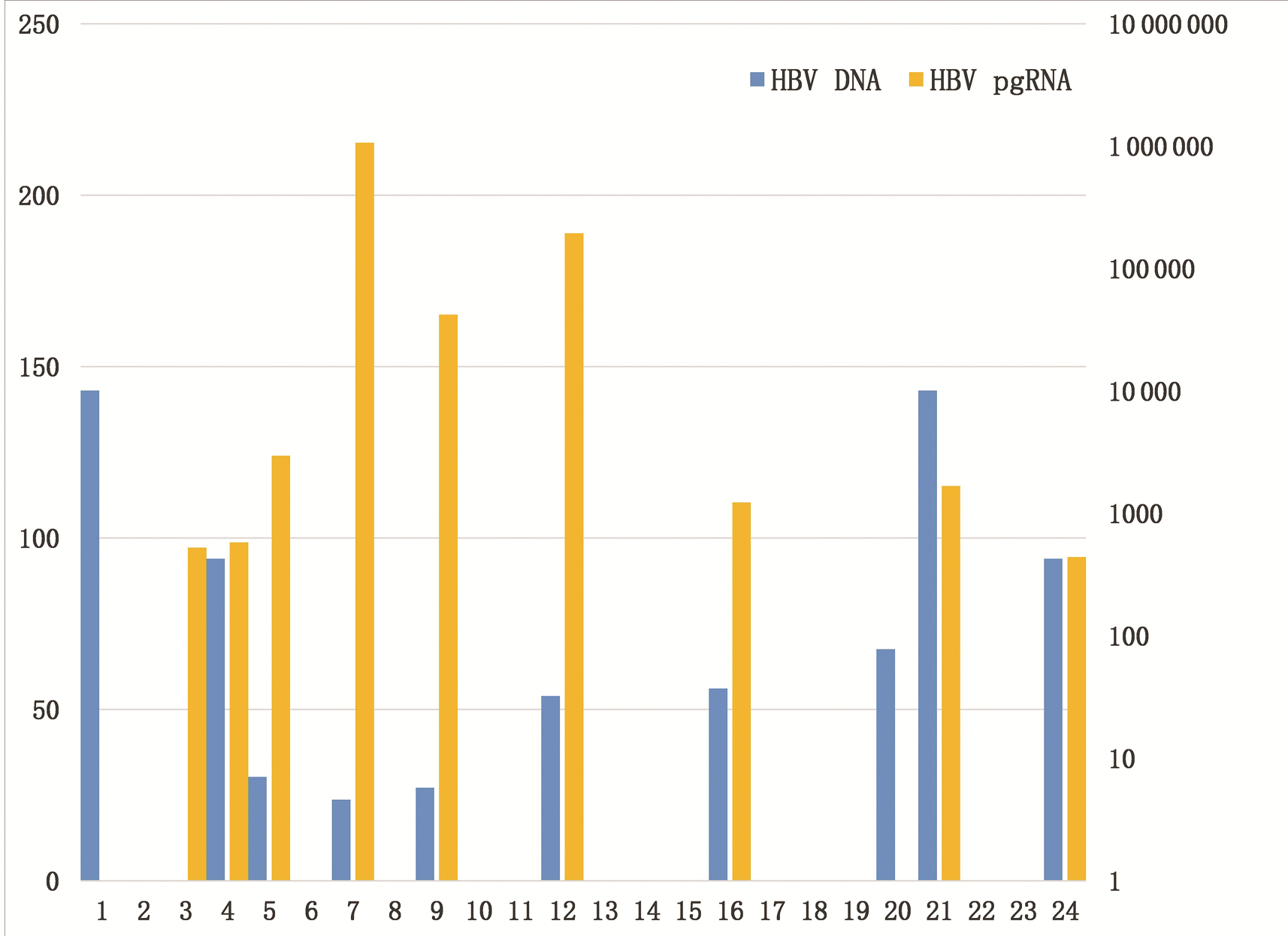| [1] |
MANNS MP, CZAJA AJ, GORHAM JD, et al. Diagnosis and management of autoimmune hepatitis[J]. Hepatology, 2010, 51(6): 2193-2213. DOI: 10.1002/hep.23584. |
| [2] |
GRØNBÆK L, VILSTRUP H, JEPSEN P. Autoimmune hepatitis in Denmark: incidence, prevalence, prognosis, and causes of death. A nationwide registry-based cohort study[J]. J Hepatol, 2014, 60(3): 612-617. DOI: 10.1016/j.jhep.2013.10.020. |
| [3] |
RAIMONDO G, ALLAIN JP, BRUNETTO MR, et al. Statements from the Taormina expert meeting on occult hepatitis B virus infection[J]. J Hepatol, 2008, 49(4): 652-657. DOI: 10.1016/j.jhep.2008.07.014. |
| [4] |
GEORGIADOU SP, ZACHOU K, LIASKOS C, et al. Occult hepatitis B virus infection in patients with autoimmune liver diseases[J]. Liver Int, 2009, 29(3): 434-442. DOI: 10.1111/j.1478-3231.2008.01851.x. |
| [5] |
CHEN XX, XIANG KH, ZHANG HP, et al. Occult HBV infection in patients with autoimmune hepatitis: A virological and clinical study[J]. J Microbiol Immunol Infect, 2020, 53(6): 946-954. DOI: 10.1016/j.jmii.2019.04.009. |
| [6] |
ALVAREZ F, BERG PA, BIANCHI FB, et al. International autoimmune hepatitis group report: review of criteria for diagnosis of autoimmune hepatitis[J]. J Hepatol, 1999, 31(5): 929-938. DOI: 10.1016/s0168-8278(99)80297-9. |
| [7] |
HENNES EM, ZENIYA M, CZAJA AJ, et al. Simplified criteria for the diagnosis of autoimmune hepatitis[J]. Hepatology, 2008, 48(1): 169-176. DOI: 10.1002/hep.22322. |
| [8] |
Chinese Society of Hepatology, Chinese Medical Association; Chinese Society of Gastroenterology, Chinese Medical Association; Chinese Society of Infectious Diseases, Chinese Medical Association. Consensus on the diagnosis and management of autoimmune hepatitis (2015)[J]. J Clin Hepatol, 2016, 32(1): 9-22. DOI: 10.3969/j.issn.1001-5256.2016.01.002. |
| [9] |
FANG Y, SHANG QL, LIU JY, et al. Prevalence of occult hepatitis B virus infection among hepatopathy patients and healthy people in China[J]. J Infect, 2009, 58(5): 383-388. DOI: 10.1016/j.jinf.2009.02.013. |
| [10] |
YIP TC, WONG GL. Current knowledge of occult hepatitis B infection and clinical implications[J]. Semin Liver Dis, 2019, 39(2): 249-260. DOI: 10.1055/s-0039-1678728. |
| [11] |
|
| [12] |
FANG Y, TENG X, XU WZ, et al. Molecular characterization and functional analysis of occult hepatitis B virus infection in Chinese patients infected with genotype C[J]. J Med Virol, 2009, 81(5): 826-835. DOI: 10.1002/jmv.21463. |
| [13] |
POLLICINO T, CACCIOLA I, SAFFIOTI F, et al. Hepatitis B virus PreS/S gene variants: pathobiology and clinical implications[J]. J Hepatol, 2014, 61(2): 408-417. DOI: 10.1016/j.jhep.2014.04.041. |
| [14] |
KIM H, LEE SA, KIM DW, et al. Naturally occurring mutations in large surface genes related to occult infection of hepatitis B virus genotype C[J]. PLoS One, 2013, 8(1): e54486. DOI: 10.1371/journal.pone.0054486. |
| [15] |
RIDOLA L, ZULLO A, LAGANÀ B, et al. Hepatitis B (HBV) reactivation in patients receiving biologic therapy for chronic inflammatory diseases in clinical practice[J]. Ann Ist Super Sanita, 2021, 57(3): 244-248. DOI: 10.4415/ANN_21_03_08. |
| [16] |
XIA Y, GUO H. Hepatitis B virus cccDNA:Formation, regulation and therapeutic potential[J]. Antiviral Res, 2020, 180: 104824. DOI: 10.1016/j.antiviral.2020.104824. |
| [17] |
XIA Y, GUO H. Hepatitis B virus cccDNA: Formation, regulation and therapeutic potential[J]. Antiviral Res, 2020, 180: 104824. DOI: 10.1016/j.antiviral.2020.104824. |
| [18] |
SI LL, LI XD, LI L, et al. Inhibitory effect of Suduxing extracts on covalently closed circular DNA of hepatitis B virus[J/CD]. Chin J Exp Clin Infect Dis(Electronic Edition), 2020, 14(4): 265-271. DOI: 10.3877/cma.j.issn.1674-1358.2020.04.001. |
| [19] |
TAN N, LUO H, XU XY. Significance of hepatitis B virus pregenomic RNA in the progression of chronic hepatitis B[J]. J Clin Hepatol, 2018, 34(10): 2221-2223. DOI: 10.3969/j.issn.1001-5256.2018.10.035. |
| [20] |
CACCIOLA I, POLLICINO T, SQUADRITO G, et al. Occult hepatitis B virus infection in patients with chronic hepatitis C liver disease[J]. N Engl J Med, 1999, 341(1): 22-26. DOI: 10.1056/NEJM199907013410104. |
| [21] |
GIANNINI E, CEPPA P, BOTTA F, et al. Previous hepatitis B virus infection is associated with worse disease stage and occult hepatitis B virus infection has low prevalence and pathogenicity in hepatitis C virus-positive patients[J]. Liver Int, 2003, 23(1): 12-18. DOI: 10.1034/j.1600-0676.2003.01742.x. |
| [22] |
CHAN HL, TSANG SW, LEUNG NW, et al. Occult HBV infection in cryptogenic liver cirrhosis in an area with high prevalence of HBV infection[J]. Am J Gastroenterol, 2002, 97(5): 1211-1215. DOI: 10.1111/j.1572-0241.2002.05706.x. |
| [23] |
FUKUDA R, ISHIMURA N, NⅡGAKI M, et al. Serologically silent hepatitis B virus coinfection in patients with hepatitis C virus-associated chronic liver disease: clinical and virological significance[J]. J Med Virol, 1999, 58(3): 201-207. DOI: 10.1002/(sici)1096-9071(199907)58:3<201::aid-jmv3>3.0.co;2-2.
|
| [24] |
BRANCO F, MATTOS AA, CORAL GP, et al. Occult hepatitis B virus infection in patients with chronic liver disease due to hepatitis C virus and hepatocellular carcinoma in Brazil[J]. Arq Gastroenterol, 2007, 44(1): 58-63. DOI: 10.1590/s0004-28032007000100013. |
| [25] |
MIURA Y, SHIBUYA A, ADACHI S, et al. Occult hepatitis B virus infection as a risk factor for hepatocellular carcinoma in patients with chronic hepatitis C in whom viral eradication fails[J]. Hepatol Res, 2008, 38(6): 546-556. DOI: 10.1111/j.1872-034X.2007.00316.x. |














 DownLoad:
DownLoad:

